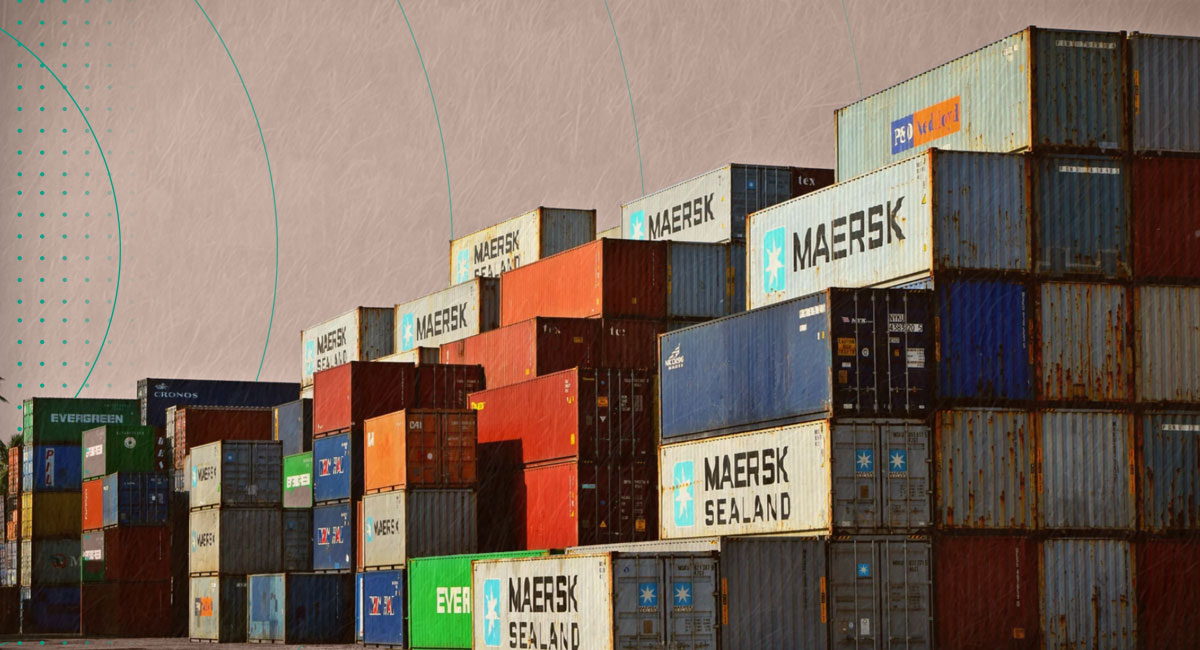In today’s globalized business landscape, organizations are increasingly looking beyond their geographical boundaries to tap into international talent pools. This expansion, however, brings its share of challenges, particularly in managing human resources across different legal and cultural environments. Two solutions that have gained prominence in this regard are Professional Employer Organizations (PEOs) and Employer of Record (EOR) services.
While they may appear similar at first glance, there are critical distinctions that can significantly impact a business’s operations and compliance. In this article, we’ll delve into the nuances of PEOs and EORs, helping business leaders make informed decisions when expanding their workforce globally.
Understanding PEOs (Professional Employer Organizations)
WHAT IT IS: A Professional Employer Organization (PEO) is a firm that partners with businesses to co-manage their workforce, providing HR services, benefits administration, payroll, and regulatory compliance while sharing employer responsibilities.
A PEO helps companies manage their human resources, payroll, benefits, and compliance responsibilities. This co-employment model means that while the client company directs the employees’ day-to-day activities, the PEO handles HR-related tasks.
Key Features:
- Co-Employment Relationship: PEOs enter a co-employment arrangement where they become the employer of record for tax purposes, sharing responsibilities with the client company.
- Comprehensive HR Services: They provide a range of services including payroll administration, benefits management, HR compliance, and workers’ compensation.
- Suitability for Small to Medium Businesses: PEOs are particularly beneficial for smaller companies that may not have the resources to manage complex HR functions internally.
Pros of a PEO
- Cost Savings: PEOs often reduce HR-related costs through economies of scale.
- Comprehensive HR Management: They provide a full suite of HR services including payroll, benefits administration, and compliance.
- Access to Better Benefits: Small and medium businesses can offer more competitive employee benefits.
- Regulatory Compliance: Ensures adherence to employment laws and regulations, reducing legal risks.
- Time-Saving: Frees up time for business owners to focus on core business activities.
- Risk Management: Helps manage and mitigate HR-related risks.
- Employee Development and Training: Offers access to training and development resources.
- Streamlined HR Processes: Simplifies HR processes with integrated systems and expert support.
- Scalability: Facilitates easy scaling of HR operations as the business grows.
- Expertise and Support: Provides access to HR experts and support staff.
- Improved Employee Satisfaction: Potentially leads to higher employee satisfaction due to better benefits and streamlined HR processes.
- Reduced Administrative Burden: Decreases the workload of managing various HR tasks.
- Efficient Payroll Management: Handles all aspects of payroll administration efficiently.
- Assistance with Recruitment and Hiring: Offers support in recruitment and employee onboarding processes.
- Enhanced Employee Onboarding and Training: Facilitates a more structured and effective onboarding process.
Cons of a PEO
- Loss of Control: Some degree of control over HR and benefits management is ceded to the PEO.
- Generic Benefits Packages: Benefits may be less tailored to specific company needs.
- Co-Employment Risks: Legal and financial risks associated with the co-employment model.
- Potential for Service Limitations: May not support unique or highly specialized HR needs.
- Limited International Capabilities: Often not equipped to handle international employment compliance.
- Dependency: Creates a reliance on an external organization for critical HR functions.
- Employee Misunderstanding: Employees may be confused about the dual-employer relationship.
- Variable Costs: Costs can fluctuate based on workforce size and services utilized.
- Limited Customization: Less flexibility in customizing certain HR policies or practices.
- Contractual Obligations: Commitment to contractual terms which may include termination clauses or fees.
- Integration Issues: Potential challenges in integrating PEO systems with existing company processes.
- Quality Variability: Quality of service can vary depending on the PEO chosen.
- Privacy Concerns: Handling of sensitive employee data by an external party.
- Cultural Misalignment: Possible misalignment with company culture and values.
- Change Management: Challenges associated with transitioning to a PEO model.
How Much Does a PEO Cost?
The cost of partnering with a PEO can vary widely depending on several factors such as the size of your workforce, the services required, and the geographical locations of your employees. Typically, PEOs charge either a percentage of the total payroll or a fixed per-employee fee. The percentage model usually ranges from about 3% to 15% of the total payroll, which can be more cost-effective for smaller companies with lower payroll expenses. Alternatively, the per-employee fee model, where charges can range from approximately $40 to $160 per employee per month, may be more predictable and easier to budget for, particularly for businesses with a larger workforce. These fees generally encompass a comprehensive suite of services including payroll administration, tax filing, benefits management, and regulatory compliance support. The appeal of PEOs, especially for smaller businesses or those with limited internal HR capabilities, lies in the access to professional HR services and benefits at a cost that is often lower than managing these functions in-house, due to the economies of scale that PEOs can leverage.
Understanding EORs (Employer of Records)
WHAT IT IS: An Employer of Record (EOR) is a service entity that legally employs and manages workers on behalf of another company, handling all employment-related compliance, payroll, and benefits in various jurisdictions.
Unlike PEOs, EORs assume full legal responsibility for employment, including compliance with local labor laws, taxation, and visa requirements.
Key Features:
- Full Employment Responsibility: EORs become the legal employer, handling all aspects of employment, from onboarding to termination.
- Global Capability: They are particularly adept at managing international employment, understanding local legal and cultural nuances.
- Flexibility and Control: While the EOR handles employment responsibilities, the client company retains control over the employees’ day-to-day activities.
Pros of an EOR
- Global Expansion Support: Facilitates hiring in multiple countries without establishing legal entities.
- Legal Compliance: Ensures full compliance with local employment laws and regulations in different countries.
- Simplified Hiring Process: Streamlines the process of hiring international employees.
- Risk Reduction: Mitigates legal and financial risks associated with international employment.
- Time and Resource Savings: Saves time and resources that would be spent on understanding and adhering to international labor laws.
- Payroll and Tax Management: Manages payroll processing and tax obligations in each country.
- Employee Benefits Management: Handles administration of employee benefits in accordance with local standards.
- Onboarding and Offboarding: Manages the onboarding and offboarding processes for international employees.
- Contract and Legal Document Management: Handles employment contracts and other legal documentation.
- Flexibility in Hiring: Offers flexibility to hire employees in new markets without long-term commitments.
- Enhanced Speed to Market: Enables quicker setup of operations in new countries.
- Reduced Administrative Burden: Reduces the workload of managing international HR tasks.
- Cultural Adaptation: Helps adapt HR practices to fit local cultural norms.
- Expertise in Local Markets: Provides insights and expertise in various local labor markets.
- No Need for Local Entity: Eliminates the need to establish a local entity in each new market.
Cons of an EOR
- Higher Cost: Generally more expensive than managing employment internally or using a PEO.
- Less Control Over HR Functions: Companies have less control over HR functions and employee management.
- Standardized Solutions: May offer less customized solutions for benefits and payroll.
- Dependence on a Third Party: Reliance on an external organization for key employment functions.
- Complexity in Coordination: Potential challenges in coordinating between company policies and EOR processes.
- Quality Variability: Quality of service can vary depending on the EOR provider.
- Limited Industry-Specific Expertise: May not offer specialized services for certain industries.
- Potential Cultural Misalignment: Risk of misalignment with company culture and values in the management of international employees.
- Data Privacy Concerns: Handling of sensitive employee data by an external party.
- Restrictions in Employee Engagement: Limitations in directly engaging with employees regarding certain HR issues.
- Potential Delays: Possible delays in response or action due to differing time zones or bureaucratic processes.
- Contractual Obligations: Binding terms of service and termination clauses.
- Limited Direct Communication: Reduced direct communication with employees due to the EOR’s intermediary role.
- Integration with Existing Systems: Challenges in integrating EOR systems with company’s existing HR and payroll systems.
- Change Management: Need for internal change management when transitioning to an EOR model.
How Much Does an EOR Cost?
EOR services, given their extensive legal responsibilities and global reach, typically come at a higher cost compared to PEOs. EOR pricing models often involve either a flat fee per employee or a percentage of the employee’s salary, with the percentage ranging, on average, from 10% to 20%. This fee structure reflects the comprehensive nature of the services provided, including managing payroll, taxes, benefits, and ensuring full compliance with local employment laws in various countries. The specific costs can also be influenced by factors such as the complexity of employment laws in the target country, the level of benefits provided, and the nature of the job roles being filled. For companies looking to expand internationally without establishing a legal entity in each new country, the investment in EOR services can be justified by the significant savings in time, legal complexities, and administrative burdens. Despite the higher costs, EORs offer a streamlined and compliant pathway to global expansion, making them a valuable option for businesses with international employment needs.
Choosing Between PEO and EOR
When expanding your workforce, especially on a global scale, choosing the right employment solution is crucial. The decision between a PEO and an EOR hinges on several factors, each playing a pivotal role in your company’s operational efficiency, legal compliance, and overall strategic goals. Let’s delve deeper into these considerations:
Business Size and Scope
Small to Medium-Sized Enterprises (SMEs)
- PEO Advantage: SMEs often have limited HR resources. A PEO can provide comprehensive HR services, enabling these businesses to offer competitive employee benefits, akin to larger corporations, without bearing the full administrative burden.
- EOR Consideration: While EORs can also support SMEs, they are typically more resource-intensive and may offer services that go beyond the immediate needs of smaller businesses.
Large Corporations and International Expansion
- EOR Advantage: For businesses looking to expand globally, EORs can be invaluable. They eliminate the need for setting up legal entities in every country, a process that can be costly and time-consuming.
- PEO Limitation: PEOs may not have the infrastructure or legal capability to support international employment, making them less suitable for companies with a global footprint.
Geographical Scope and Legal Compliance
Domestic Operations
- PEO Suitability: If your operations are confined to your home country, a PEO is often sufficient. They are well-versed in domestic employment laws and can effectively manage HR functions within these boundaries.
International Employment
- EOR Strength: EORs specialize in navigating the complex web of international labor laws, tax regulations, and compliance requirements. This is particularly beneficial for companies hiring in multiple countries, each with its unique legal landscape.
Level of Control and Flexibility
HR and Benefits Management
- PEO Collaboration: With a PEO, you maintain a level of control over your HR policies and employee benefits. This arrangement allows for a more tailored approach to employee management, aligning with your company’s culture and policies.
- EOR Approach: EORs, while managing all legal aspects of employment, may offer less flexibility in terms of bespoke benefits and payroll structures. This is due to their role as the legal employer, adhering to standardized processes that align with local regulations.
Cost Implications
Budget Considerations
- PEO Cost-Effectiveness: PEOs can be a more budget-friendly option, especially for SMEs, due to their shared employer model and economies of scale in offering benefits.
- EOR Investment: Utilizing an EOR service typically involves a higher financial investment. This is justified by the extensive legal coverage and ease of international hiring they provide.
Nature of Employment Relationships
Employee Management
- PEO Co-Employment: The co-employment model of PEOs requires a clear understanding and delineation of responsibilities between your company and the PEO. This model can sometimes lead to complexities in employee management and liability issues.
- EOR Clarity: With an EOR, the demarcation of responsibilities is clearer. The EOR assumes all legal employer responsibilities, allowing your company to focus solely on managing the day-to-day activities of your employees.
Long-Term Strategic Goals
Scaling and Flexibility
- PEO for Growing Businesses: For businesses in growth phases, especially domestically, PEOs offer a scalable solution to manage increasing HR demands without overburdening internal resources.
- EOR for Global Vision: For companies with a clear roadmap for international expansion, EORs provide the necessary infrastructure to scale globally in a compliant and efficient manner.
Specialized Needs
Industry-Specific Requirements
- Certain industries may have specific HR needs or regulatory requirements that are better catered to by either a PEO or an EOR. For instance, industries with a high rate of international project-based work might favor EOR services for their flexibility in managing global talent.
Conclusion
Navigating the complexities of global workforce management requires a strategic approach, and both PEOs and EORs offer distinct advantages. By understanding the differences and evaluating their organization’s unique requirements, business leaders can choose the right solution to effectively manage their international workforce, ensuring compliance, efficiency, and scalability. To learn more about getting an EOR or PEO for your business, schedule a call with our growth experts.






